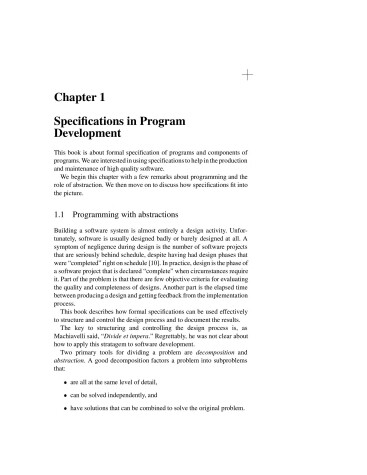Texts and Monographs in Computer Science
1 total work
Building software often seems harder than it ought to be. It takes longer than expected, the software's functionality and performance are not as wonderful as hoped, and the software is not particularly malleable or easy to maintain. It does not have to be that way. This book is about programming, and the role that formal specifications can play in making programming easier and programs better. The intended audience is practicing programmers and students in undergraduate or basic graduate courses in software engineering or formal methods. To make the book accessible to such an audience, we have not presumed that the reader has formal training in mathematics or computer science. We have, however, presumed some programming experience. The roles of fonnal specifications Designing software is largely a matter of combining, inventing, and planning the implementation of abstractions. The goal of design is to describe a set of modules that interact with one another in simple, well defined ways. If this is achieved, people will be able to work independently on different modules, and yet the modules will fit together to accomplish the larger purpose. In addition, during program maintenance it will be possible to modify a module without affecting many others. Abstractions are intangible. But they must somehow be captured and communicated. That is what specifications are for. Specification gives us a way to say what an abstraction is, independent of any of its implementations."
